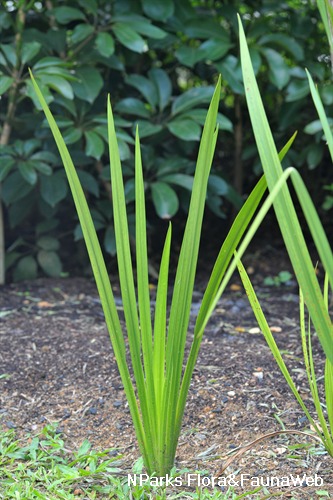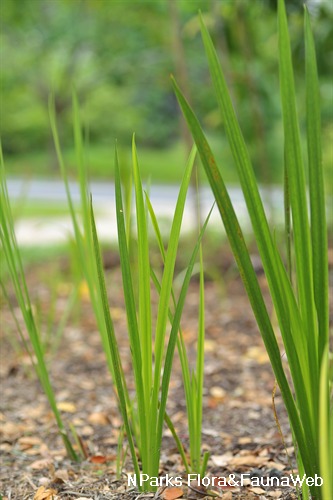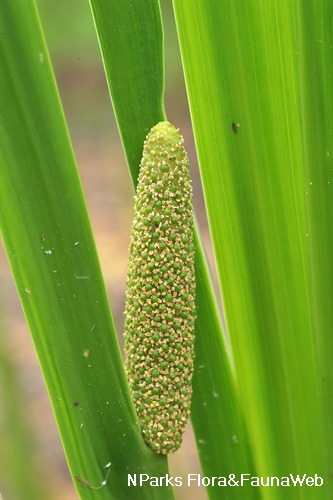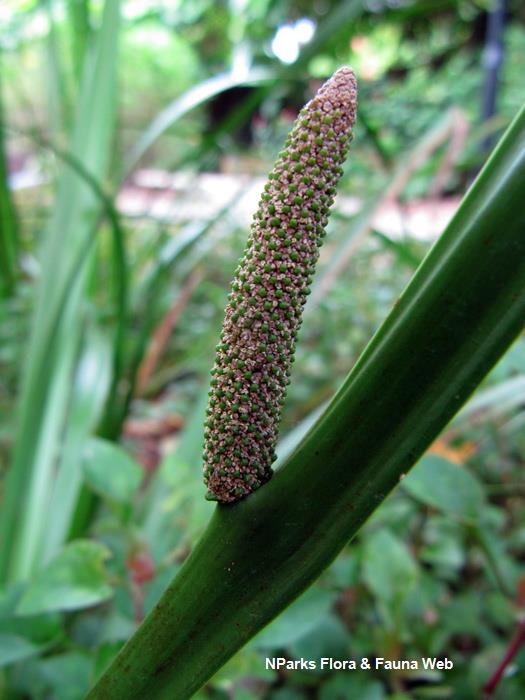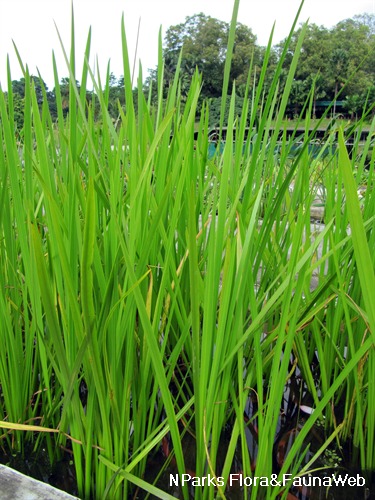
Name
Classifications and Characteristics
| Plant Division | Angiosperms (Flowering Seed Plants) (Monocotyledon) |
|---|---|
| Plant Growth Form | Aquatic & Hydrophyte (Emergent Aquatic, Waterside / Marginal) |
| Lifespan (in Singapore) | Perennial |
| Mode of Nutrition | Autotrophic |
| Plant Shape | Grassy |
| Maximum Height | 1 m |
| Maximum Plant Spread / Crown Width | 1 m |
Biogeography
| Native Distribution | India, Central Asia, Eastern Europe |
|---|---|
| Native Habitat | Aquatic (Freshwater Pond / Lake / River) |
| Preferred Climate Zone | Tropical, Sub-Tropical / Monsoonal |
Description and Ethnobotany
| Growth Form | Perennial herb with an erect growth habit. It can grow up to 150cm tall and has a creeping growth form. |
|---|---|
| Foliage | Linear, aromatic leaves have entire leaf margin and narrow to a fine tip. They are arranged in a fan-like shape and have a red base. |
| Stems | It has a branching, underground rhizome. |
| Flowers | The flowers are bisexual and consist of 6 tepals, 6 stamens and a sessile stigma. |
| Fruit | The fruit is in the form of a berry. |
| Cultivation | It is best grown under full sun, in consistently wet soil. |
| Ethnobotanical Uses | Medicinal: In Indian folk medicine, this plant is used in combination with other ingredients to treat inflammatory pain, headaches and migraines. The anti-inflammatory activity of compounds in this species was demonstrated in a rat-based model by Muthuraman and Singh (2011). |
Landscaping Features
| Desirable Plant Features | Ornamental Foliage |
|---|---|
| Landscape Uses | Coastal, Riverine, Pond / Lake / River |
| Thematic Landscaping | Water Garden |
| Usage Hazard - Cons | Toxic Upon Ingestion |
| Usage Hazard - Cons Remarks | Asian populations of this species may have a toxic compound in the roots known as asarone. North American and Siberian populations may lack this compound. |
Plant Care and Propagation
| Light Preference | Full Sun |
|---|---|
| Water Preference | Lots of Water |
| Rootzone Tolerance | Waterlogged Soils (Does not Drain Site), Heavy Clay Soils |
| Propagation Method | Storage Organ (Rhizome) |
Foliar
| Mature Foliage Colour(s) | Green |
|---|
References
| References | Murthuraman and Singh. 2011. Attenuating effect of Acorus calamus extract in chronic constriction injury induced neuropathic pain in rats: an evidence of anti-oxidative, anti-inflammatory, neuroprotective and calcium inhibitory effects. BMC Complementary and Alternative Medicine. 11. 24 |
|---|
Image Repository
Others
| Master ID | 29182 |
|---|---|
| Species ID | 3491 |
| Flora Disclaimer | The information in this website has been compiled from reliable sources, such as reference works on medicinal plants. It is not a substitute for medical advice or treatment and NParks does not purport to provide any medical advice. Readers should always consult his/her physician before using or consuming a plant for medicinal purposes. |

